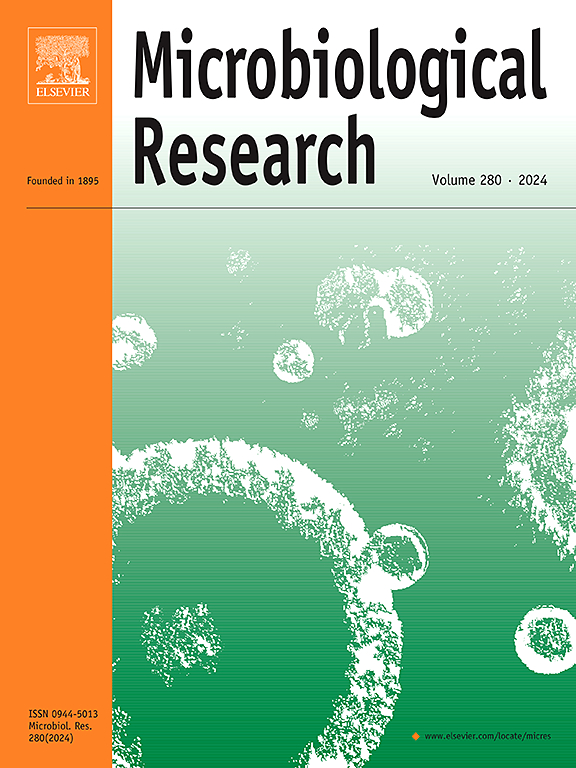Emergence and spread of ST5 methicillin-resistant Staphylococcus aureus with accessory gene regulator dysfunction: genomic insights and antibiotic resistance
IF 6.1
1区 生物学
Q1 MICROBIOLOGY
引用次数: 0
Abstract
The globally disseminated Staphylococcus aureus ST5 clone poses a major public health threat due to its multidrug resistance and virulence. Here, we identified an agr-dysfunctional (agrA-I238K) ST5 MRSA clone that has spread across East and Southeast Asia, with recent increases in China since its emergence in the 1970s. Comparative genomic analyses identified distinct single-nucleotide polymorphisms and mobile genetic elements linked to enhanced resistance and virulence. This clone exhibits resistance to seven antimicrobial classes, including third-generation tetracyclines and fusidic acid, and shares phenotypic and genetic similarities with the vancomycin-intermediate S. aureus Mu50 strain, including reduced susceptibility to vancomycin, teicoplanin, and daptomycin. The agrA-I238K mutation attenuates hemolytic activity, increases biofilm formation, and reduces daptomycin susceptibility, suggesting a key role in the clone’s success. Our results demonstrate the important role of agrA-I238K mutation in the widespread distribution of agr-dysfunctional MRSA and highlight the importance of genomic surveillance in tracking the spread of agr-dysfunctional ST5 MRSA.
伴有辅助基因调节功能障碍的ST5耐甲氧西林金黄色葡萄球菌的出现和传播:基因组学见解和抗生素耐药性
全球传播的金黄色葡萄球菌ST5克隆由于其多药耐药和毒力造成了重大的公共卫生威胁。在这里,我们确定了一种agr功能失调(agrA-I238K) ST5 MRSA克隆,该克隆已在东亚和东南亚传播,自20世纪70年代出现以来,最近在中国有所增加。比较基因组分析确定了不同的单核苷酸多态性和与增强抗性和毒力相关的可移动遗传元件。该克隆对包括第三代四环素和夫西地酸在内的7种抗菌素类药物具有耐药性,并且与万古霉素中间体金黄色葡萄球菌Mu50菌株具有表型和遗传相似性,包括对万古霉素、替柯planin和达托霉素的敏感性降低。agrA-I238K突变减弱了溶血活性,增加了生物膜的形成,并降低了达托霉素的敏感性,这表明在克隆的成功中起着关键作用。我们的研究结果证明了agrA-I238K突变在agr-功能失调的MRSA的广泛分布中的重要作用,并强调了基因组监测在追踪agr-功能失调的ST5 MRSA传播中的重要性。
本文章由计算机程序翻译,如有差异,请以英文原文为准。
求助全文
约1分钟内获得全文
求助全文
来源期刊

Microbiological research
生物-微生物学
CiteScore
10.90
自引率
6.00%
发文量
249
审稿时长
29 days
期刊介绍:
Microbiological Research is devoted to publishing reports on prokaryotic and eukaryotic microorganisms such as yeasts, fungi, bacteria, archaea, and protozoa. Research on interactions between pathogenic microorganisms and their environment or hosts are also covered.
 求助内容:
求助内容: 应助结果提醒方式:
应助结果提醒方式:


